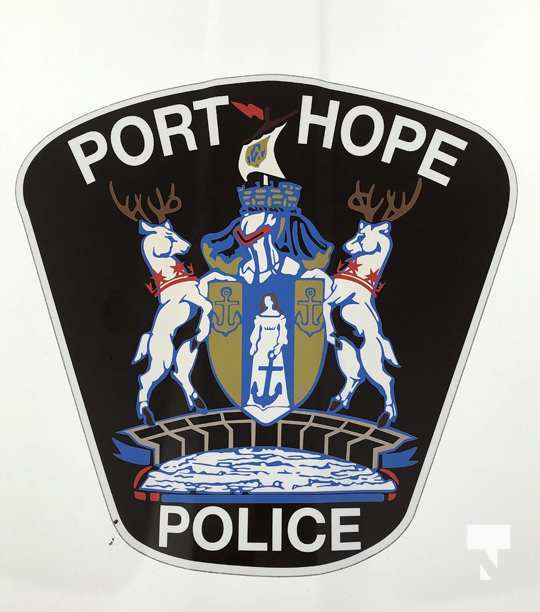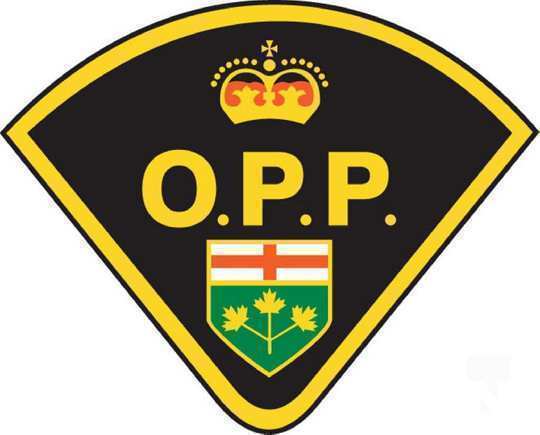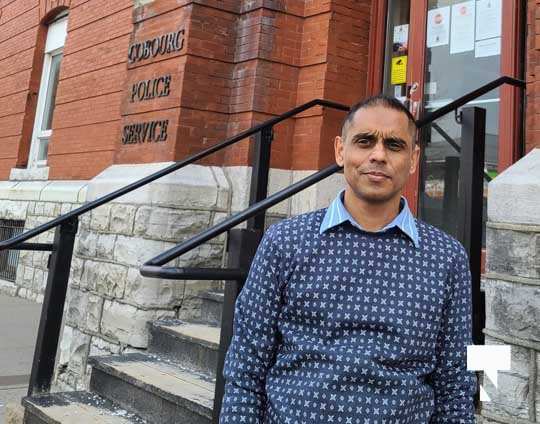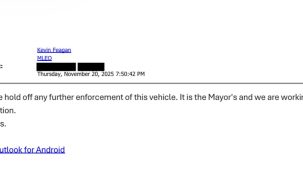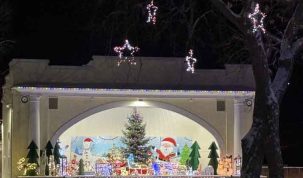At a busy spot along Kingston’s historic waterfront, noisy but important construction is proceeding on what soon will be the National Memorial to the Fallen.
It’s the culmination of almost 15 years of work by an organization called the National Wall of Remembrance Association, which achieved final approval of their design and construction plans from the City of Kingston in June 2024 and is being constructed at MacDonald Park
And though the final design turned out not be a wall, the important thing is the uniqueness of the memorial that is under way.
“It’s intended to be a memorial for the people who have made that ultimate sacrifice in Canada, as opposed to a war memorial,” said board member and retired CSIS Director General Larry Brooks.
“We wanted to be careful not to undermine any other monument or memorial – something dedicated to the memory of the people who have made that ultimate sacrifice. And we tried to do it as broadly as possible, reaching back as early as the 1700s,” Brooks said.
“We tried to cover all the angles of the Canadian community – people from the Merchant Marine, nurses, soldiers, sailors, First World War, Second World War.
“The intention was to honour their memory and their sacrifice.”
The process of selecting those stories that best represented that ideal was not only tremendously difficult, but also enormously eye-opening
“To find out just how significant our contribution was, and the contribution of Canadians over the years – some of the earliest years up to Afghanistan and peace keeping,” Brooks recalled.
“It was truly an honour to look at those stories, but equally difficult to decide just which ones we could put in our limited number of images to properly position the kind of stories that we wanted to be told.”
Each image is essentially a signpost, Brooks added.
“There will be a QR code placed on the images so, when you come up and scan the code with your phone, it will take you to our website, that will give you a much more fulsome description of the image itself.”
As well, for those who wish to explore further, there will be links to the Canadian Archives and the Canadian War Museum.
“We are really hoping to use this as an educational opportunity for people to come take a look at the images and truly understand what kind of sacrifice their fellow Canadians have made.”
The QR code is a bit of technology that could not have been part of the project when it was originally envisioned, but Brooks said they are delighted to be able to take advantage of an innovation that will enhance the project to such a degree.
Though the board of directors has changed over the years, he said, “we have had a fairly stable concept of what we wanted to do and, from there, we have done some significant fundraising and had the support of the broader community including the City of Kingston.”
And as it takes shape, he said, the are gratified to watch the progress.
The board members come from a variety of backgrounds, some of them military.
“We tried to take advantage of that to broaden our perspective on the stories themselves, the types of images we selected,” he said.
They also enlisted help to get a better picture of the sacrifices made by Canada’s Indigenous community.
“We wanted to make sure we were properly recognizing it. I’m sure we will never get it completely right, but we did our absolute best,” Brooks said.
Last year, once they got municipal approvals, a contract was signed with Picture This On Granite, and the images they had chosen were entrusted to this memorial company. But prior to this, choosing those images was a painstaking process taking several years.
Sometimes it boiled down to the quality and clarity of the images. And sometimes – as in some of the earliest stories – paintings were all they had to go on.
“Sometimes the paintings were a little more stylized,” he recalled.
“Even though it may not be entirely historically accurate, they really captured the moment and we decided to go with them.
“In other cases, there were images that were just mesmerizing,” he continued, citing a 1940 photograph known as Wait For Me, Daddy that was popular at the time.
“It’s just so important to have something like that, that captures the feeling of these people, the sacrifices of these people.”
Brooks characterized the work-in-progress as “better than halfway” to completion.
“Most of the work was underground,” he explained.
“Today we’re installing the four pillars. Each of those pillars will commemorate an era in Canadian history, starting with the first one – pre-World War I, with some images from the Great Peace of Montreal in 1701.”
The second pillar, of course, is dedicated to Canada’s sacrifices in what was then called the Great War – before anyone knew there would be a World War II – with battles, casualties and issues that must be covered.
The third pillar, dedicated to World War II, has much to share about Canada’s contributions to a war that in many ways shaped the nation.
The final pillar covers everything since that war, up to the present time.
“Those four pillars will be placed in a circle with a rosette pattern in the stone, and it’s placed here in a strategic spot in Kingston, Ontario.”
The location adds so much to the monument. For example, one of their images is The Death of General Wolfe, “and behind us is Wolfe Island,” Brooks pointed out.
“And there was a famous naval battle fought on this very stretch of water, where the Royal George was chased by American ships back into Kingston Harbour.
“The Martello towers are here, that were built circa 1812. Fort Henry is just around the corner.
“This is a very central piece of Canadian history, and was actually the site of a British military barracks back in the 1800s.”
More than that, it’s in a very popular park near the hospital and, in modern-day terms, the location is perfect.
“There’s a lot of foot traffic and we are really hoping that, by choosing this location, the site will get maximum exposure and people will have the opportunity to leisurely examine the images, and then from there be inspired to look further into the website and the other sources of information we have provided.”
Brooks likes to picture a visitor to the site who might be somewhat like himself originally. He was interested, considered himself reasonably knowledgeable, but looked deeper and found himself wanting to know more and more.
“It was truly an honour to work on this, and what I found is that the more I did, the more I wanted to know,” he shared.
“I think, in a way, that is what we are hoping. Once you see some of these images, you will want to know more about them. And we are going to help provide a pathway for people to explore that.”















